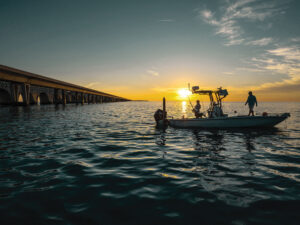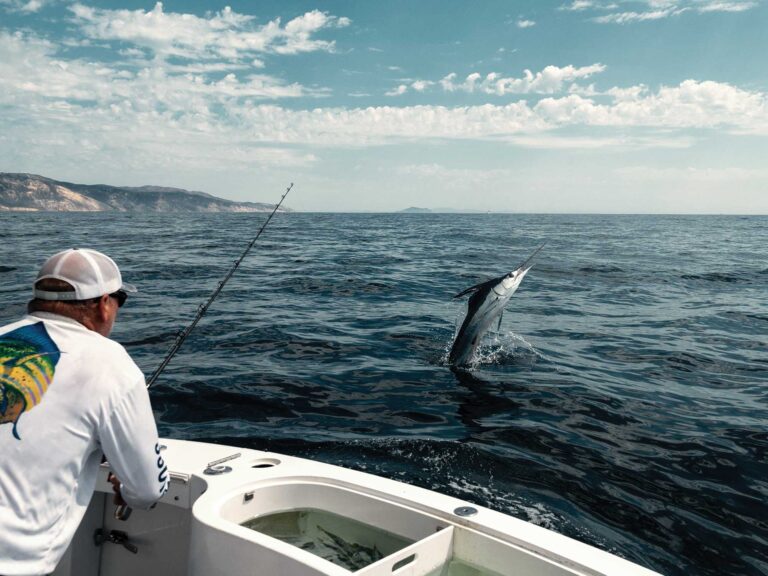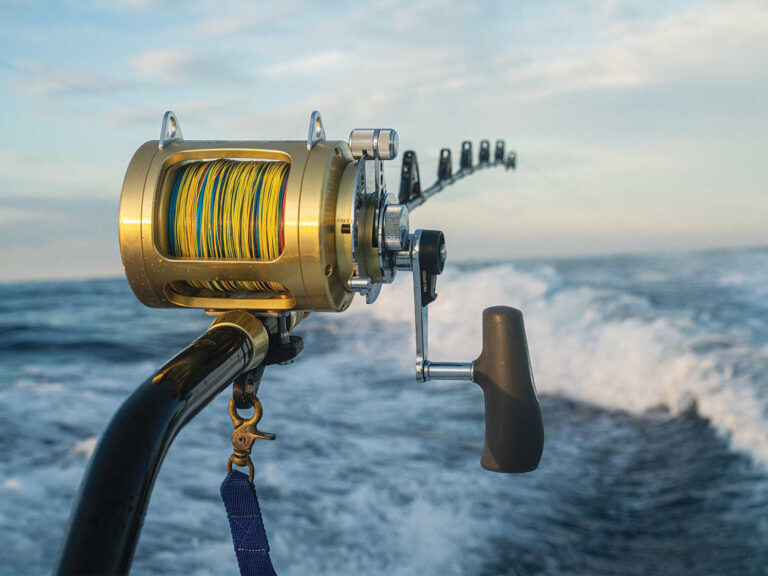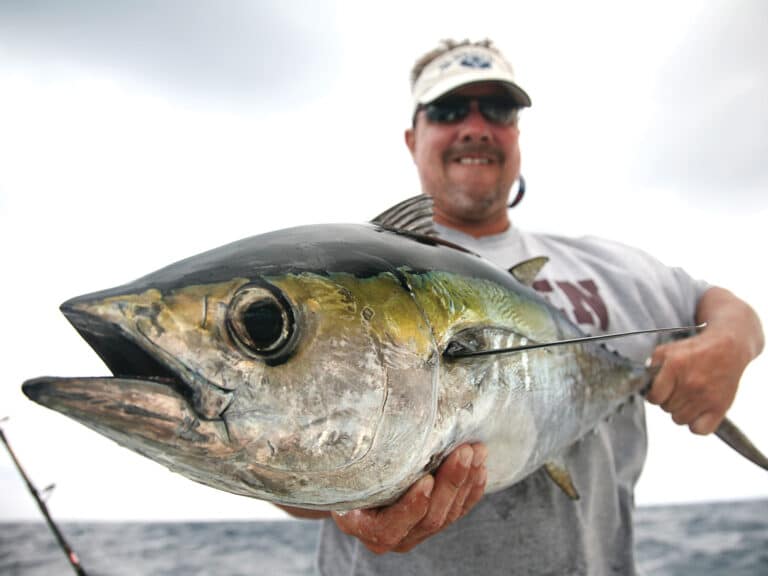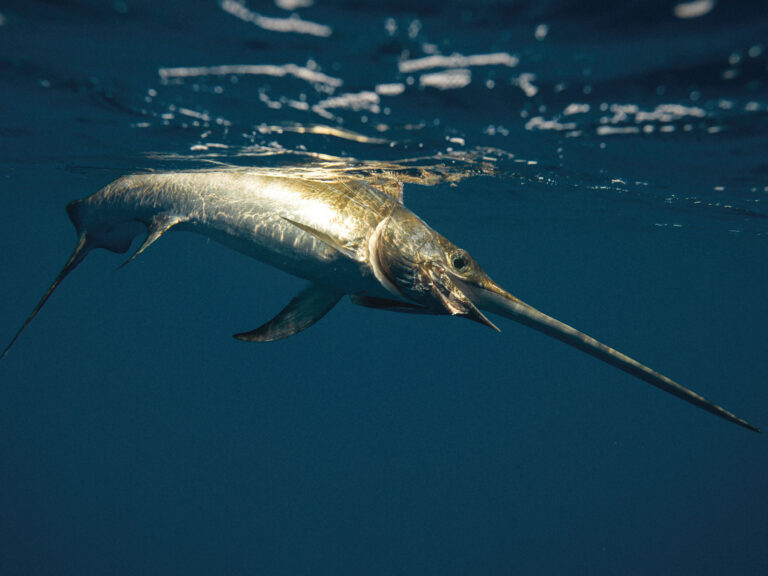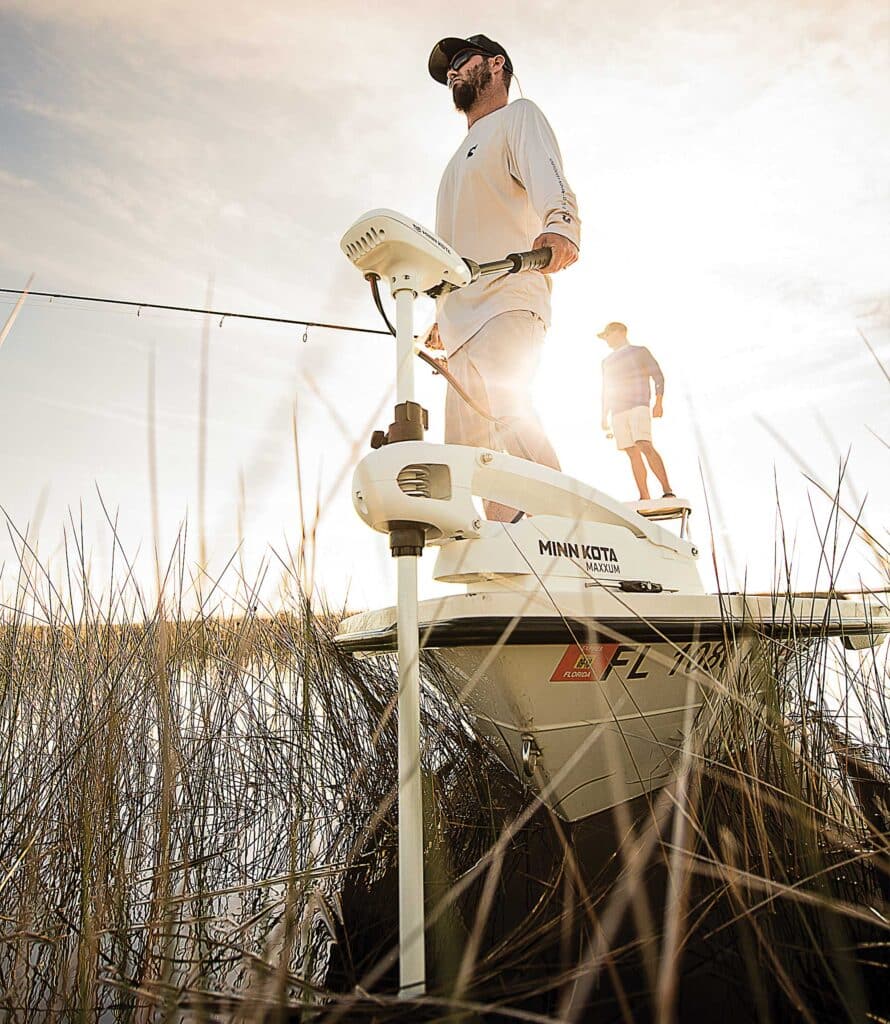
The short answer is yes. But don’t toss your Danforth overboard with no rode attached just yet. There are still scenarios when the real deal is the better option.
Once, trolling motors were only used on small freshwater boats for silent, low-speed maneuvering. Then small saltwater boats got into the act. But in 2009, Minn Kota unveiled its iPilot series of trolling motors, which had a feature called Spot-Lock that would eventually change the way mainstream anglers fish.
With the recent innovation of saltwater-grade long-shaft trolling motors that now stretch to 96 inches in length and have features similar to Spot-Lock, saltwater boats in excess of 30 feet long can just say no to metal anchors most of the time. Brands that offer saltwater-grade bow-mount trolling motors with virtual anchors include MotorGuide, Rhodan, Garmin, Power-Pole and Minn Kota.
Looking for an example? Let’s say you’re fishing in a narrow, marked shipping channel flanked by shoal waters. This spot can be productive, but it’s often illegal to anchor there. With a virtual anchor, you can fish anywhere within its boundaries and scoot quickly when a large vessel approaches. In addition, when prospecting for fish, the ability to jump quickly from spot to spot without setting and retrieving an anchor is probably Spot-Lock’s greatest attribute. It’s less work, and that means more productivity. Most trolling motors have key-fob-like controllers, which allow boat repositioning without even going to the helm. When fish are located, a press of a button sets the virtual anchor.
What’s more, properly positioning a boat next to a small reef or wreck in deep water with a conventional anchor can be frustrating when the wind and current aren’t cooperating. A virtual anchor saves time, energy and frustration, and allows anglers to get to the fun part right away.
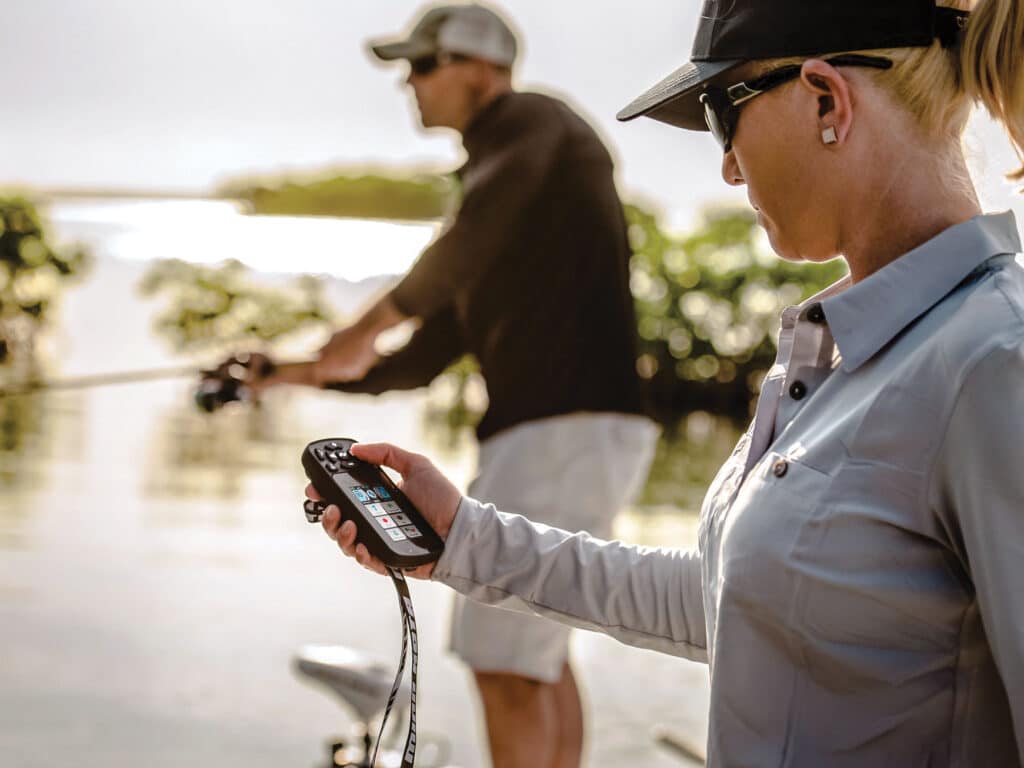
When is it Better to Use a Real Anchor?
According to longtime guide and tournament fisherman Capt. George Mitchell: “When conditions get rough, it’s usually better to anchor. I live in Florida’s Big Bend and fish a lot on a 2-mile-long buoy line marking Cape San Blas Shoals, which attracts a lot of fish and baitfish. To keep the boat in position near enough to cast to the schools, Spot-Lock can be very helpful. But when the wind picks up, the trolling motor works too hard and makes a lot of loud, intermittent noises. In addition, the prop will sometimes pop to the surface and cavitate, which scares fish.
“When the fish are in shallow water near the beach,” Mitchell says, “I often see fishermen chasing species like tarpon and cobia with their trolling motors, which can spook them. It’s better to anchor and let the fish come to you.”
There are also some places where avid anglers fish that are relatively small. But when conditions are right, the fish will be there; you don’t have to hunt for them. Anchoring is the stealthiest way to work in these situations.
In Key West Harbor, anglers like charter boat Capt. Robert “RT” Trosset have found the resident tarpon population responds well to chumming, and conventional anchoring is still the go-to technique there. They’ve devised a protocol that allows a large number of boats to fish close to each other during the outgoing-tide bite. The boats anchor side by side and use a detachable anchor line that has a buoy tethered to it. They start tossing out chum, and when a tarpon is hooked, they detach the anchor line and drift back to fight the fish so that it doesn’t spool the angler.
Preserving Battery Life
When using conventional lead-acid AGM batteries, it’s advisable not to regularly discharge them past 50 percent to maximize their life, and using them as virtual anchors most of the day runs the risk of doing that. Lithium-iron-phosphate (LiFePO4) batteries are more robust and can be depleted deeply without ill effects. But there’s no warning when they are drained, and the motor will just stop. When using an anchor, the only things drawing power are usually the fish finder and the livewell.
Another of the best reasons for carrying an anchor (or two) on board is that trolling motors and engines fail sometimes. And having an anchor can keep a bad situation from turning worse, like when your dead-in-the-water boat starts drifting toward the rocks. While a trolling motor’s virtual anchor feature is a fantastic innovation that can help catch more fish and save your back in the process, always have a manual override.
While reading online forums on this subject, I discovered some boat owners have either stopped using conventional anchors or don’t even carry them anymore, which is a big mistake. The best anglers recognize there is a time and place for each and will take advantage of the best of both worlds.




